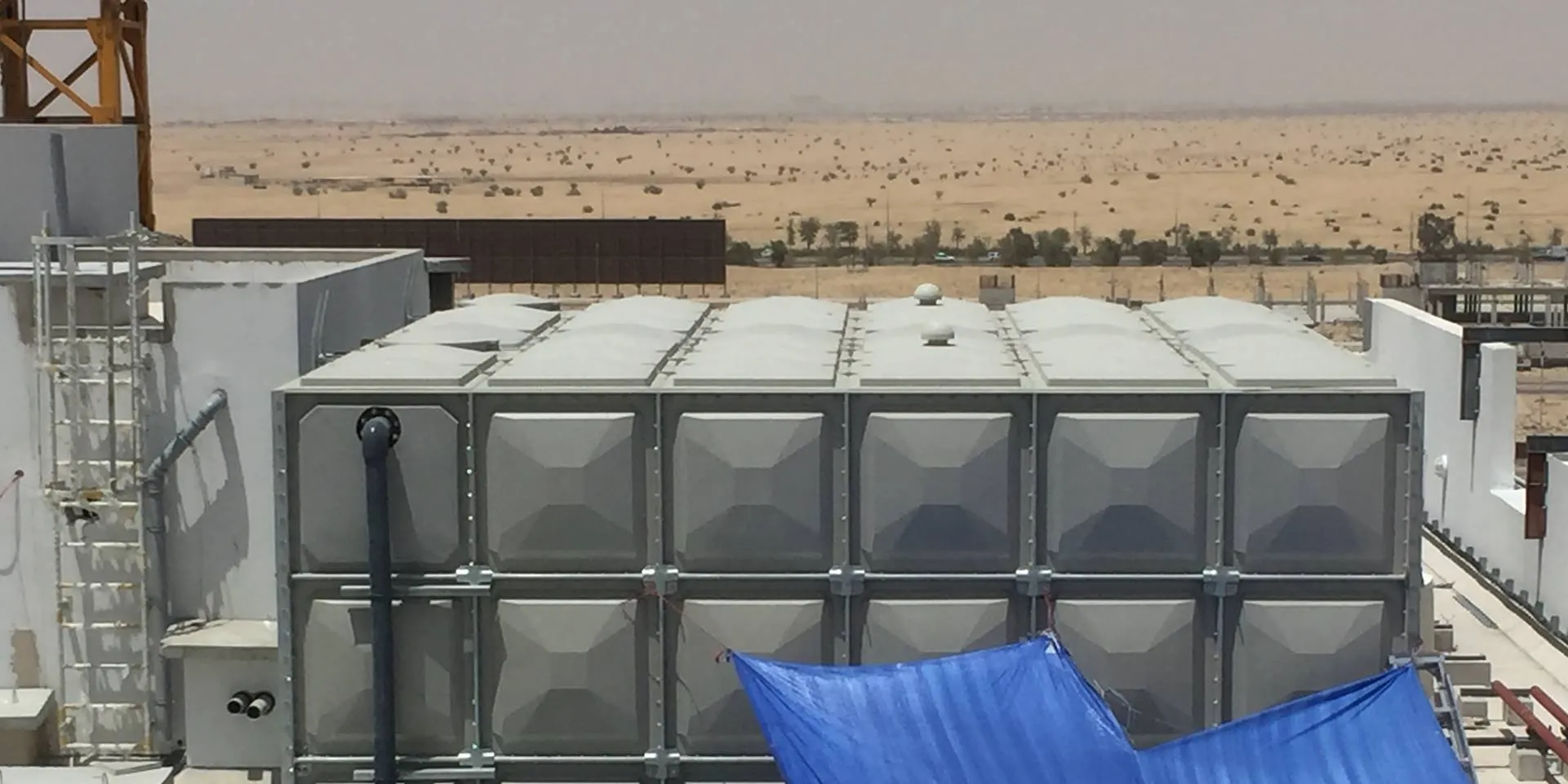A municipal water tank is a cornerstone of urban infrastructure, ensuring safe and reliable water storage for households, industries, and communities. From stabilizing pressure in distribution networks to providing reserves for fire protection, these tanks play a crucial role in maintaining public health and safety.
With the advancement of modern materials such as GRP water tanks, FRP water tanks, and SMC sectional tanks, municipalities now have access to highly durable, hygienic, and sustainable solutions that outperform traditional concrete and steel tanks.
Functions of a Municipal Water Tank
-
Water Storage & Supply Security: Provides continuous water even during peak demand or emergencies.
-
Pressure Regulation: Elevated tanks ensure stable pressure across urban water supply systems.
-
Emergency & Fire Protection: Stores large volumes of water to support firefighting networks.
-
System Balancing: Reduces strain on pumps and pipelines by balancing demand and supply.

Types of Municipal Water Tanks
Municipal tanks are designed in different forms to suit urban landscapes and capacity requirements:
-
Elevated Water Tanks – Provide gravity-based pressure for distribution networks.
-
Ground-Level Reservoirs – Large storage tanks supporting daily urban consumption.
-
Underground Tanks – Installed where land space is limited or aesthetics are a priority.
-
Sectional Modular Tanks – GRP and FRP panel-based systems offering scalability and easy installation.
Materials Used in Municipal Water Tanks
Choosing the right material is critical for durability, hygiene, and maintenance efficiency. Common materials include:
-
Concrete Tanks: Strong but require long construction times and maintenance.
-
Steel Tanks: High strength but prone to corrosion if not coated properly.
-
GRP (Glass Reinforced Plastic) Tanks: Lightweight, corrosion-resistant, and ideal for sectional water tank designs.
-
FRP (Fiberglass Reinforced Plastic) Tanks: Excellent chemical resistance, durability, and minimal upkeep.
-
SMC (Sheet Molding Compound) Water Tanks: Known for hygienic properties, smooth inner walls, and compliance with international drinking water standards.
Design Considerations for Municipal Water Tanks
Engineers must take into account:
-
Capacity based on population growth and industrial usage
-
Structural integrity against wind, seismic activity, and hydrostatic pressure
-
Water quality compliance with WHO and local standards
-
Resistance to corrosion and bacterial growth
-
Ease of inspection, cleaning, and repair
-
Cost-efficiency over the full lifecycle of the tank
Advantages of GRP, FRP, and SMC Municipal Water Tanks
Modern composite water tanks are becoming the preferred choice for municipalities worldwide because they offer:
-
Corrosion Resistance: No rusting issues compared to steel tanks.
-
Lightweight Modular Design: Easy transportation and assembly on site.
-
Long Service Life: Reduced maintenance and replacement costs.
-
Hygienic & Safe: Smooth interiors reduce bacterial growth and sediment buildup.
-
Eco-Friendly: Sustainable and recyclable materials support green initiatives.
Applications of Municipal Water Tanks
-
Drinking Water Distribution: Essential for cities and growing towns.
-
Fire Protection Systems: Ensures reserves for firefighting emergencies.
-
Backup Supply: Provides resilience during droughts, natural disasters, or maintenance shutdowns.
-
Industrial Support: Supplies factories and commercial zones with stable water flow.
-
Rural and Semi-Urban Projects: Extends clean water to underserved communities.
Conclusion
The municipal water tank is far more than a storage unit; it is a safeguard of urban life. By ensuring uninterrupted supply, regulating pressure, and serving as emergency reserves, these tanks underpin modern living.
With the shift toward advanced materials like GRP, FRP, and SMC water tanks, municipalities can now rely on cost-effective, hygienic, and sustainable water storage solutions. As urban populations expand, these tanks will remain central to future-proofing city infrastructure and ensuring water security for generations to come.

